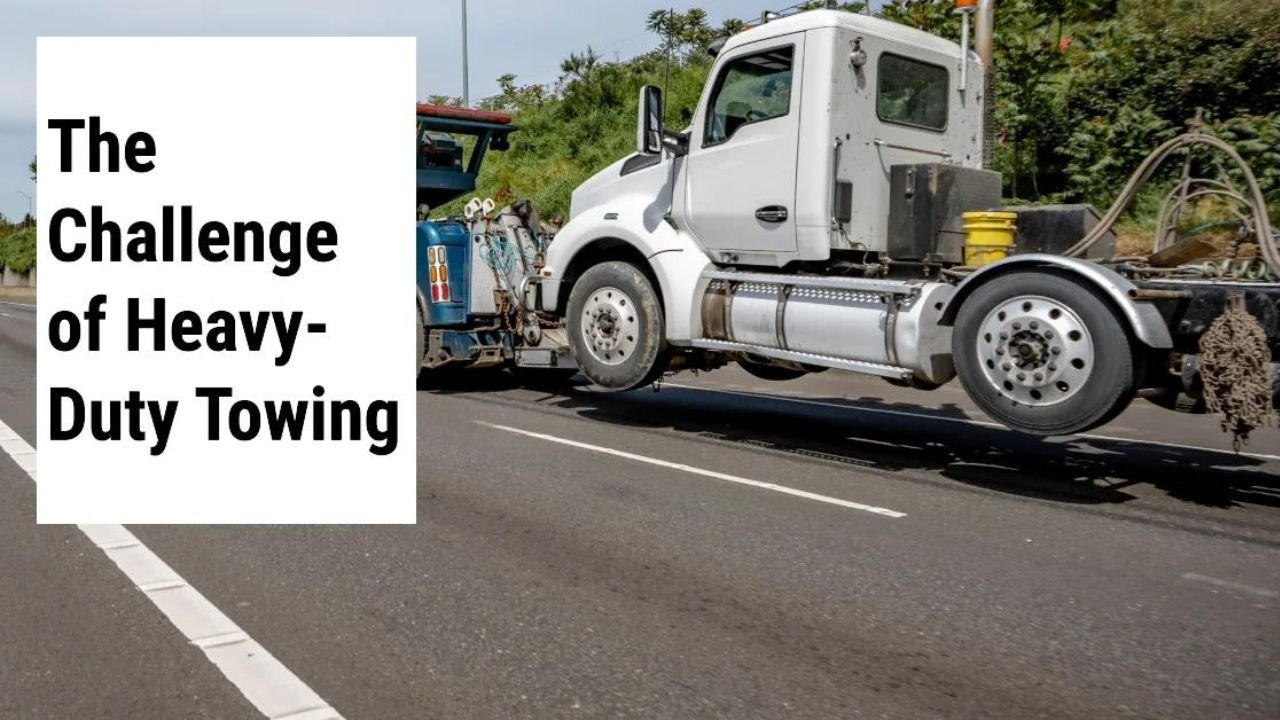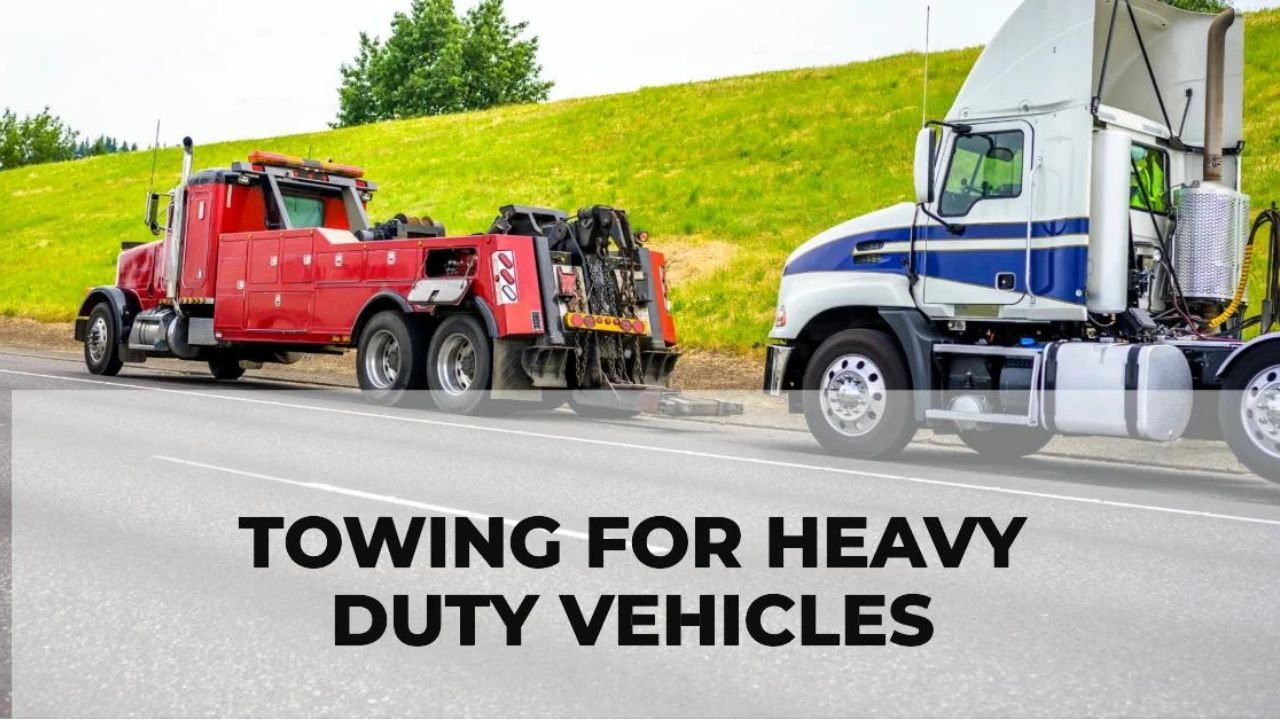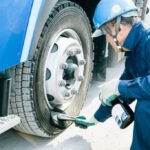Towing heavy duty vehicles, such as commercial trucks, buses, and construction equipment, requires specific considerations and techniques to ensure a safe and efficient towing operation.
In this blog, we will delve deeper into the world of heavy-duty towing, exploring the specialized equipment and techniques required for these challenging scenarios. Let’s uncover the secrets of successfully towing heavy duty vehicles.
The Challenge of Heavy-Duty Towing
Towing heavy-duty vehicles comes with its own set of unique challenges. These vehicles are often larger, heavier, and more complex than regular passenger vehicles. As a result, specialized equipment and techniques are necessary to handle their weight, size, and structural demands.

Understanding Towing Capacity and Equipment
When it comes to towing heavy-duty vehicles, understanding the concept of towing capacity is paramount. Towing capacity refers to the maximum weight a vehicle can safely tow without risking damage or compromising safety. Exceeding the towing capacity can lead to accidents, damage to the tow vehicle, or failure of towing equipment.
To ensure a successful heavy-duty towing operation, it is crucial to use specialized towing equipment designed to handle the weight and size of these vehicles. Let’s take a closer look at some of the key equipment used in heavy-duty towing scenarios.
Specialized Towing Equipment
Heavy-Duty Tow Trucks
Heavy duty tow trucks, also known as wreckers or recovery vehicles, are the workhorses of the towing industry when it comes to hauling heavy-duty vehicles. These trucks are designed to handle the immense weight of commercial trucks, buses, and construction equipment.
Equipped with powerful winches, heavy-duty tow trucks can safely pull or winch a disabled vehicle onto the bed of the tow truck or onto a specialized trailer. The tow truck’s boom, which extends and retracts hydraulically, provides the necessary lifting power to handle heavy loads.
Lowboy Trailers
Lowboy trailers, also known as low-bed or low-loader trailers, are commonly used in heavy-duty towing operations. These trailers have a low deck height, allowing for easy loading and unloading of heavy equipment.
Lowboy trailers are designed with multiple axles and robust suspension systems to distribute the weight evenly and improve stability during transportation. This makes them ideal for hauling large construction equipment, such as excavators, bulldozers, and cranes.
Air Cushion Recovery Systems
In certain heavy-duty towing scenarios, such as recovering overturned buses or extremely heavy loads, air cushion recovery systems come into play. These systems use compressed air to create a cushioning effect, allowing the disabled vehicle to be lifted or rotated safely.
Air cushion recovery systems minimize the risk of further damage to the disabled vehicle and provide a controlled and efficient recovery process. They are particularly useful in delicate recovery operations where stability and precision are crucial.
Read more: Types of Different Tow Trucks
Techniques for Heavy Duty Towing

Rigging and Securement
Proper rigging and securement are critical when towing heavy-duty vehicles. Rigging refers to the process of attaching towing equipment, such as chains, straps, or cables, to the disabled vehicle securely. It is essential to use the appropriate rigging techniques and equipment to ensure the load remains stable during transportation.
The securement process involves securing the disabled vehicle to the towing equipment, such as the tow truck’s bed or the lowboy trailer. Various methods can be used, including using chains, straps, or specialized tie-down systems. These techniques ensure that the vehicle remains in place and minimizes the risk of shifting during transit.
Weight Distribution and Balance
Maintaining proper weight distribution and balance is crucial for safe heavy-duty towing. Uneven weight distribution can lead to instability, increased tire wear, and reduced braking efficiency. It is essential to follow manufacturer guidelines and consider the weight distribution of the disabled vehicle when attaching it to the towing equipment.
By distributing the weight evenly and maintaining a balanced load, the towing operator can enhance stability, minimize the risk of accidents, and ensure optimal control during transportation.
Our Towing Expert Help Overturned Bus
An articulated bus overturns on a Al Khail rd, Dubai, causing traffic disruption and potential danger. Our experienced heavy-duty towing team arrives at the scene with an air cushion recovery system. We strategically places the air cushions under the bus, inflating them to create a controlled lifting force.
With precise maneuvering and coordination, the bus is gradually lifted, and using specialized equipment, it is gently rotated back onto its wheels. The disabled bus is then towed away for further inspection and repair.
Conclusion
We understand the unique challenges and considerations involved in towing heavy-duty vehicles. With our specialized equipment, highly trained team, and unwavering commitment to safety and customer satisfaction, we are well-equipped to handle the towing needs of commercial trucks, buses, and construction equipment. Contact us for all types of towing service; +971 505 073124.
Read more: Reasons Why Your Fuel Efficiency Going Down





